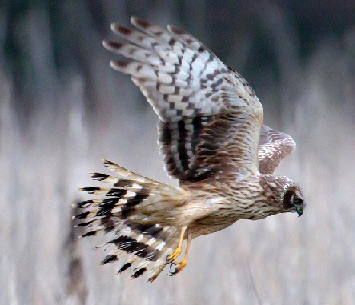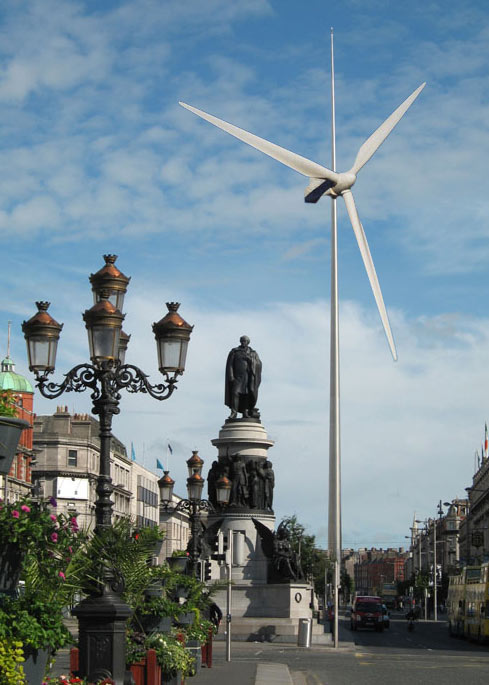Tipperary Wind Farm Planning Decision Referred To Europe By Supreme Court
The Supreme Court, having considered a challenge against An Bord Pleanála’s decision to grant planning permission for an electricity generating wind farm in Co Tipperary, have ruled that this case does raise issues of public importance.
The initial challenge refers to a ten year permission, granted by An Bord Pleanála, to ESB Wind Development and Coillte; to construct a wind farm in the area of Keeper Hill in the Silvermines Mountains in Co Tipperary.

Hen Harrier (Picture courtesy Mr Shay Connolly, Bird Watch Ireland)
The Supreme Court applicants had claimed that the permission granted breached EU Habitats and Environment Impact Assessment Directives and would contribute to the loss of some 400 acres of foraging for Hen Harrier, if and when this same wind farm was progressed.
Previously the High Court had dismissed the case of M/s Edel Grace of Grousehall Milestone, Thurles, Co Tipperary and Environmental Consultant Mr Peter Sweetman of Bunnahowen, Cashel, Co Galway, in their action.
The Supreme Court however now want the EU (CJEU) Court of Justice to determine European law issues, before ruling whether An Bord Pleanála properly assessed the impact of this Co. Tipperary wind farm on the habitat of these hen harriers, latter a protected species under EU law.
The important joint Supreme Court judgement on Friday last, before a seven-judge Supreme Court which included Mr Justice Frank Clarke and Ms Justice Iseult O’Malley, concluded that M/s Grace did have standing in her appeal. The fact that she had not participated in the planning process and resided less than one kilometre from the special protection area (SPA), did not deprive her of standing. The Supreme Court therefore agreed to refer certain issues to the CJEU concerning the procedure adopted by An Bord Pleanála. These precise issues have as yet not been described, but same are expected to be set out later.
“Man is the only creature that consumes without producing. He does not give milk, he does not lay eggs, he is too weak to pull the plough, he cannot run fast enough to catch rabbits. Yet he is lord of all the animals”. [George Orwell, Animal Farm.]
What now makes the European Court challenge by M/s Edel Grace, Grousehall, Milestone, Thurles, Co Tipperary so important?

Should a wind turbine be installed on the ‘Stiletto in the Ghetto’, in O’Connell Street, Dublin, to further improve renewable energy sources?
Some 32 farmers in Co. Tipperary availed of payments last year for their involvement in taking the necessary measures to protect the endangered Hen Harrier bird species; known romantically as “Sky Dancers” because of their skilled and elaborate aerial displays.
During the last five years well over €10m in funding was paid out to farmers in the form of compensation payments. Indeed it was a farmer in Co. Tipperary who received the single largest payment (€14,594) for the granting of this special protection. But an even bigger scandal is recognised when the latest Hen Harrier population figures are released.
Same figures indicate that there reside only an average of about 125 breeding Hen Harrier pairs left in Ireland. This figure registers a decline of over 33% since 2000 or a decline of almost 9% in 2016, despite the birds having being offered paid special protection since 2010. (Imagine what Focus Ireland could have achieved with this €10m funding, equal to over €8,000.00 per breeding bird pair over this same 5 year period).
What also makes this European challenge by M/s Edel Grace therefore important is not necessarily the wanton destruction by An Bord Pleanála to beautiful rural Tipperary landscapes; but rather that wind farms in rural areas are now being granted planning permission in EU funded Hen Harrier breeding areas, supposedly set up and funded to offer protection. This so called EU protection, together with the burning of moorland is recognised as being the root cause; seriously effecting the Irish Hen Harrier population through the removal of natural breeding habitats and naturally occurring mammal feeding grounds.

Leave a Reply